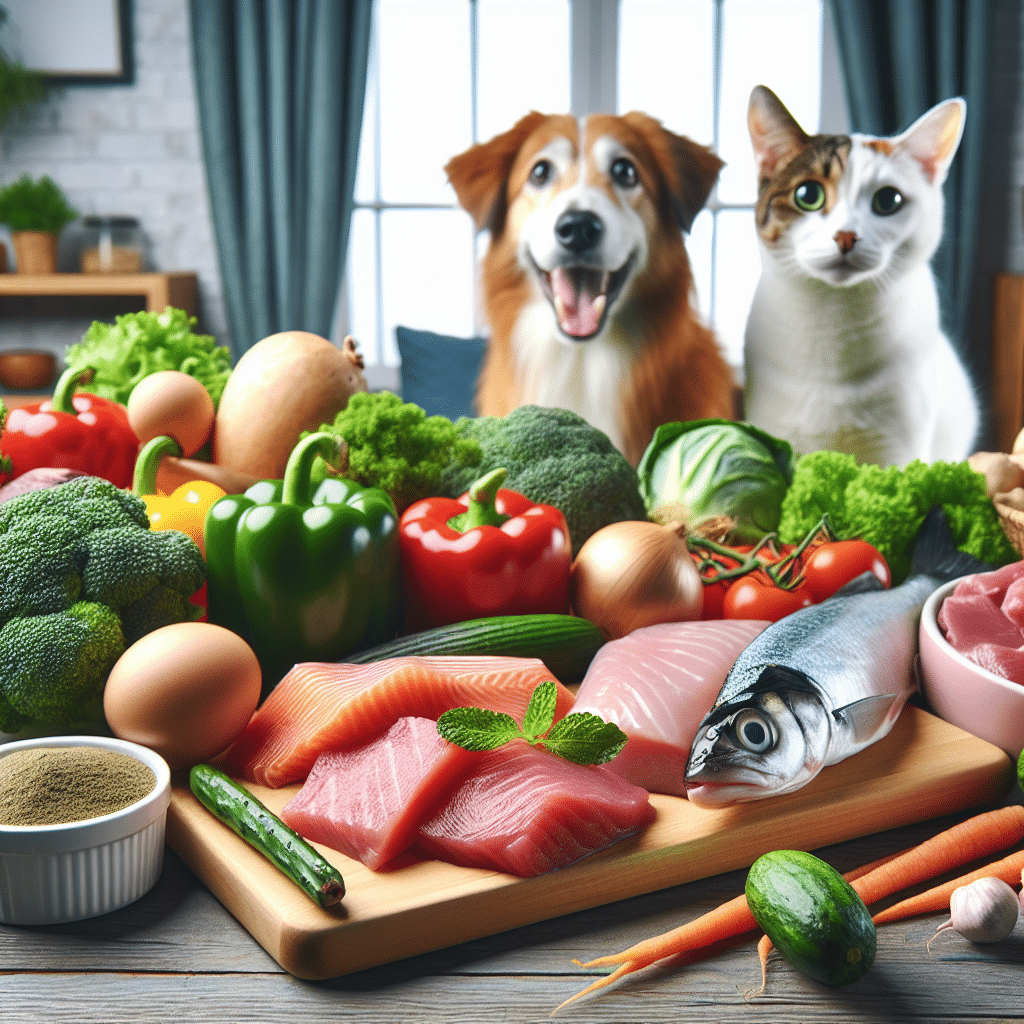Understanding the Raw Food Diet for Pets
A raw food diet for pets typically includes fresh, uncooked ingredients designed to mimic the natural, ancestral diets of dogs and cats. Both cats and dogs can benefit from a well-structured raw diet, which emphasizes whole meats, organs, bones, fruits, and vegetables. This approach is believed to enhance health, energy levels, and overall well-being.
Benefits of a Raw Food Diet
Improved Digestion
Many pet owners report that their pets on a raw diet exhibit better digestion. Raw food is easier to digest compared to processed kibble. The higher moisture content in raw meat helps with hydration, while enzymes in raw foods may aid in better digestive processes.
Shinier Coat and Healthier Skin
A raw diet often results in a shinier coat and healthier skin. The inclusion of omega-3 and omega-6 fatty acids from natural sources such as fish can improve skin texture and sheen, while reducing problems like itching and allergies.
Increased Energy Levels
Pets on a raw food diet often show improved energy levels. The natural nutrients provided by raw meats and vegetables fuel an active lifestyle, contributing to better overall vitality.
Dental Health Benefits
Chewing on raw bones contributes to healthier teeth and gums. Natural chewing action promotes dental hygiene, reducing tartar build-up that often occurs with dry, processed diets.
Reduced Allergies and Food Sensitivities
Raw diets can help alleviate symptoms of allergies and food sensitivities. By eliminating gluten, fillers, and artificial additives found in many commercial pet foods, owners may notice a reduction in allergic reactions.
Basic Raw Diet Components
Proteins
Raw meat is the cornerstone of a raw food diet. Common protein sources include:
- Beef: Versatile and rich in nutrients.
- Chicken: A lean protein option commonly used.
- Turkey: Great for pets with sensitivities to beef or chicken.
- Fish: Provides essential fatty acids; consider salmon or sardines for their omega-3 content.
Organs
Organ meats are nutrient-dense and vital for a balanced raw diet:
- Liver: High in vitamins A, B, and iron.
- Heart: A great source of taurine, crucial for a pet’s cardiovascular health.
- Kidneys: Rich in nutrients and minerals.
Bones
Raw, meaty bones should be included to ensure calcium intake and support dental health:
- Chicken wings: Easy to chew and digest.
- Neck bones: High in connective tissues that provide joint health benefits.
Fruits and Vegetables
While dogs are carnivores, they can benefit from some plant-based nutrition:
- Carrots: A good source of beta-carotene and fiber.
- Pumpkin: Aids in digestion and is rich in vitamins.
- Spinach: High in iron, calcium, and antioxidants.
Supplements
To ensure a balanced diet, consider adding:
- Fish oil or flaxseed oil for omega fatty acids.
- Probiotics to enhance gut health.
- Vitamin E as an antioxidant.
Formulating a Balanced Raw Diet
Proper Ratios
Aim for a diet consisting of approximately:
- 70-80% muscle meat (including meats and fish)
- 10% organ meat (about half should be liver)
- 10% bones (always in raw form)
Transitioning to Raw
Transitioning your pet to a raw food diet should be gradual to avoid gastrointestinal issues. Start with a small percentage of raw food mixed into their regular diet, slowly increasing the amount over a week or two.
Essential Tips for Feeding Raw
Food Safety
Handle raw meat with care to reduce the risk of bacterial contamination.
- Wash hands and surfaces thoroughly after preparation.
- Store raw food in airtight containers in the refrigerator or freezer to maintain freshness.
Monitoring Your Pet
Observe your pet closely for any signs of discomfort or allergic reactions during the transition. Consult a veterinarian regularly to monitor health and adjust the diet as needed.
Variety is Key
Incorporate a wide array of proteins and vegetables to ensure your pet receives comprehensive nutrition. Mixing protein sources prevents nutrient deficiencies and keeps meals interesting for pets.
Common Mistakes to Avoid
Going Overboard on Bones
While bones are essential, avoid hard bones that could splinter, like cooked bones or thick beef bones. Always choose softer options and ensure they are raw.
Forgetting About Hydration
Raw diets, while beneficial, can sometimes inadvertently reduce a pet’s water intake. Always provide adequate fresh water, especially if the diet is predominantly dry.
Relying Too Heavily on One Protein Source
Switching up protein sources not only enhances nutritional diversity but also reduces the likelihood of developing food allergies.
Consultation with Professionals
A consultation with a veterinarian is crucial before making drastic dietary changes. A vet or a certified pet nutritionist can provide tailored recommendations based on your pet’s age, health status, and specific needs.
Resources for Pet Owners
Consider referring to books, online forums, and local raw food diet groups for additional guidance and recipes. Many communities exist to support pet owners transitioning to a raw food diet, creating an engaging environment for sharing experiences and tips.
Raw Food Recipes to Try
Simple Chicken Mix
- Ingredients: 2 pounds of ground chicken, 1 cup of chopped carrots, 1 cup of spinach, 1/2 cup of organ meat (liver).
- Instructions: Mix all ingredients thoroughly, portion into meal-sized servings, and freeze.
Beef & Pumpkin Stew
- Ingredients: 1 pound of ground beef, 1 cup of pure pumpkin, 1/2 cup of diced peas.
- Instructions: Cook the beef until just browned, mix in pumpkin and peas, then serve once cooled.
Implementing a homemade raw food diet can be a rewarding experience for both pets and their owners, enriching their lives with nutritious, wholesome foods. Always stay informed and proactive about your pet’s needs, ensuring they thrive on every level.
